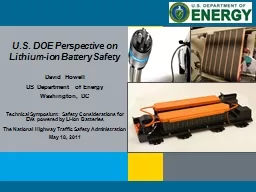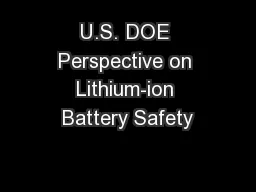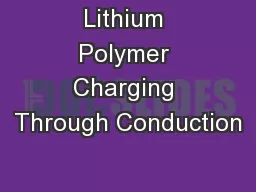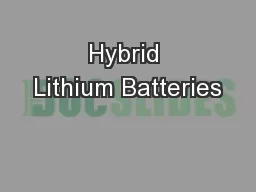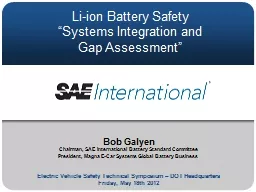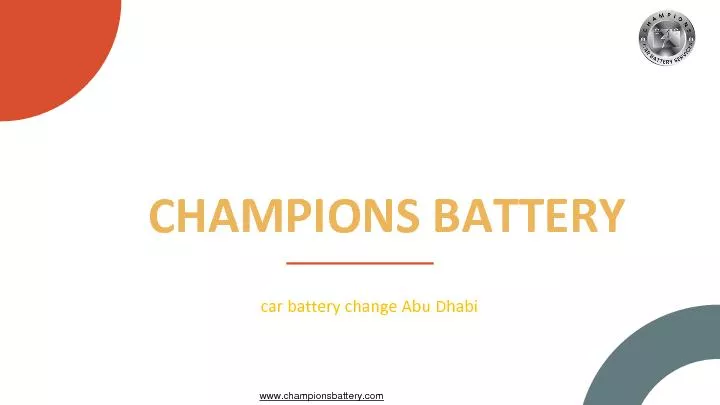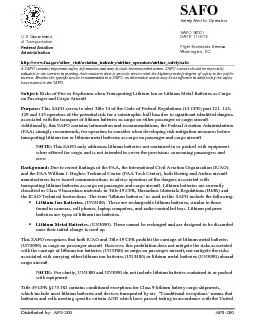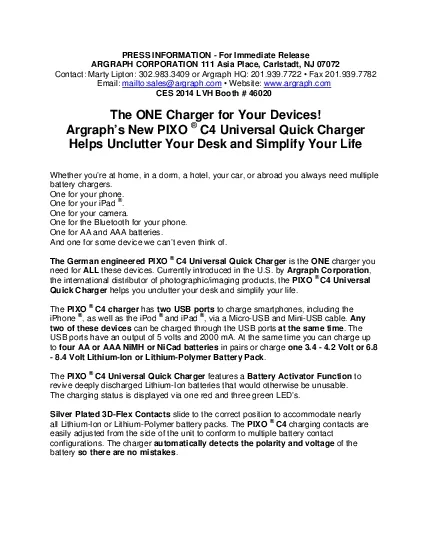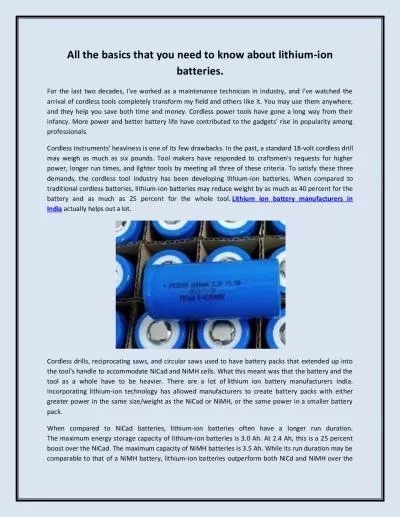PPT-U.S. DOE Perspective on Lithium-ion Battery Safety
Author : danika-pritchard | Published Date : 2016-05-24
David Howell US Department of Energy Washington DC Technical Symposium Safety Considerations for EVs powered by Liion Batteries The National Highway Traffic Safety
Presentation Embed Code
Download Presentation
Download Presentation The PPT/PDF document "U.S. DOE Perspective on Lithium-ion Batt..." is the property of its rightful owner. Permission is granted to download and print the materials on this website for personal, non-commercial use only, and to display it on your personal computer provided you do not modify the materials and that you retain all copyright notices contained in the materials. By downloading content from our website, you accept the terms of this agreement.
U.S. DOE Perspective on Lithium-ion Battery Safety: Transcript
Download Rules Of Document
"U.S. DOE Perspective on Lithium-ion Battery Safety"The content belongs to its owner. You may download and print it for personal use, without modification, and keep all copyright notices. By downloading, you agree to these terms.
Related Documents

